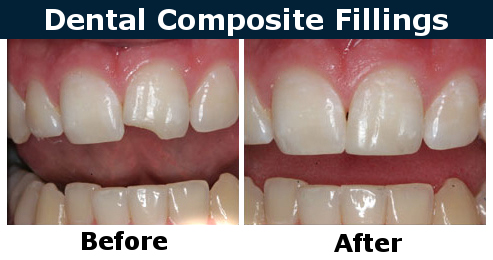The clear alternative to traditional mercury fillings.
The Problem
- Decay (a cavity) on a portion of any tooth
- Desire to replace old-fashioned mercury (silver) fillings
- Desire to maintain a white, beautiful smile

The Solution
Composite fillings are a mixture of glass or quartz filler in a resin medium that produces a tooth-colored filling. They are sometimes referred to as composites, filled resins, or bonded restorations. Composite fillings provide good durability and resistance to fracture in small-to-mid size restorations that need to withstand moderate chewing pressure. Less tooth structure is removed when the Dr. Miller prepares the tooth, and this may result in a smaller filling than that of a silver filling. Composites can also be “bonded” or adhesively held in a cavity, allowing the dentist to make a more conservative repair to the tooth. The final restoration is strong, healthy, and virtually invisible.
Advantages
Composite fillings are more than just attractive. They are environmentally non-toxic because they use no mercury. They are stronger because they bond directly to the tooth, and seal the surface of the tooth. They protect the tooth from fracturing because they don’t require the severe “undercut” (removal of healthy tooth structure) as done in silver fillings.
Disadvantages
The initial investment in a composite filling is higher than that for a silver filling. This is due to the fact that the composite material is more expensive and slightly more difficult to place. However, this investment is offset in the long run by the health benefits and reduced likelihood of restoring potentially fractured teeth.
Alternatives
Inlays/onlays are sometimes good alternatives to composite fillings, offering excellent long term durability. In cases of extensive decay, inlays/onlays or crowns are the only alternatives.
